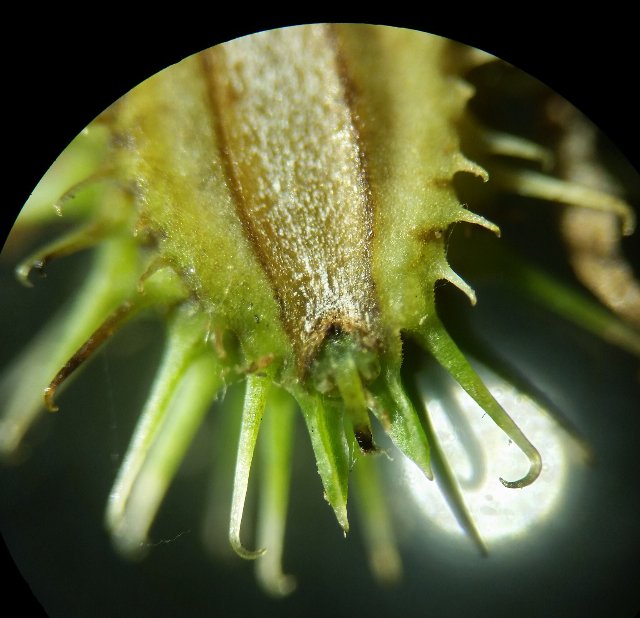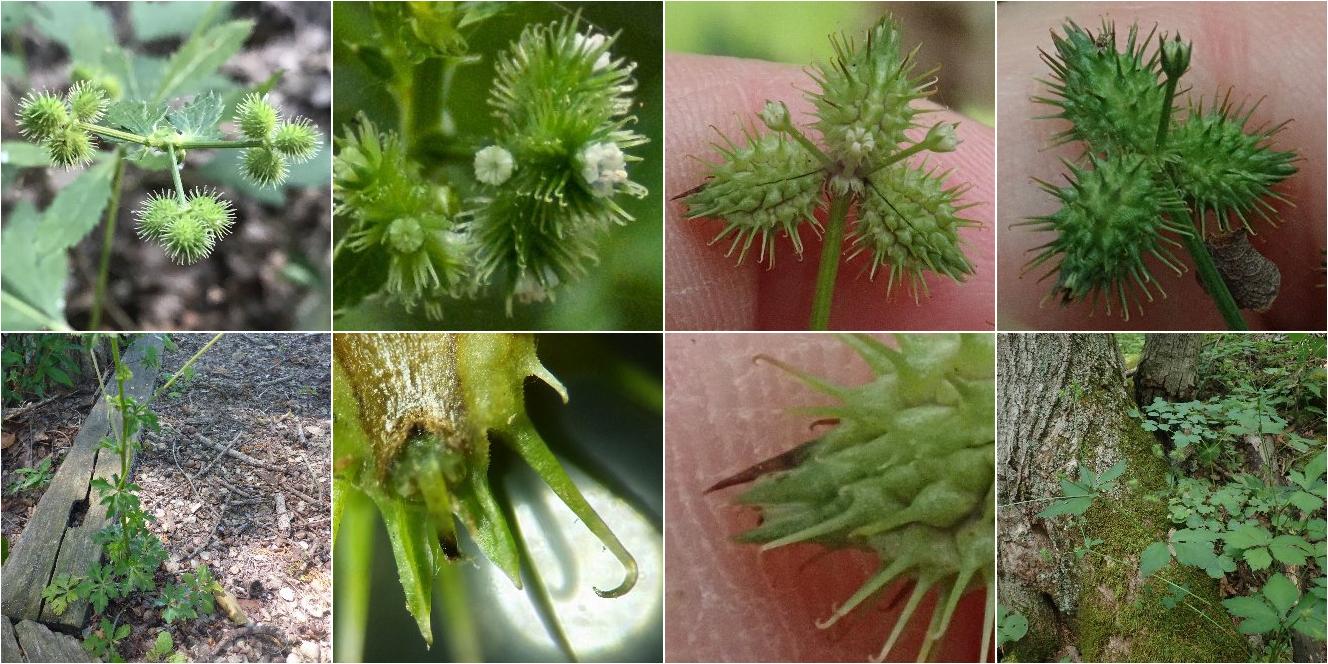Canadian Blacksnakeroot (Sanicula canadensis) vs. Largefruit Blacksnakeroot (Sanicula trifoliata)
Updated May 6th, 2022Although all Sanicula pose an ID challenge, these two are particularly confusing as they have similar leaf shapes and inflorescences that look similar at a glance. They are easily distinguished by the pedicel length of staminate flowers, when present. The seeds are also relatively easy to distinguish. Plants may not be able to be identified by leaves alone, but habitat can offer a strong clue. Where their ranges overlap, S. canadensis is much more common and found in a wider range of habitats, including disturbed habitats, anthropogenic habitats, and forests in earlier successional stages, whereas S. trifoliatum is restricted to mature, undisturbed deciduous forests.





